The blue lotus tattoo has a mystique that instantly sparks curiosity and invites deeper exploration. When you first come across this design, you might find yourself drawn to its serene allure and the delicate balance of art and symbolism it represents. This tattoo is more than just an ink design on your skin; it carries layers of meaning that can resonate with your personal journey while also echoing ancient traditions. Imagine the blue lotus as a symbol of rebirth, tranquility, and spiritual awakening that embodies the beauty of transformation. Many who have embraced the blue lotus tattoo appreciate its unique charm and reflective energy that seems to invite conversation and shared experiences. Even if you’ve never thought about tattoos this way before, the vibrant blue hues and intricate detailing can serve as a reminder of life’s constant evolution and the beauty emerging from even the most challenging times. This natural emblem invites you to step closer, to marvel at its artful design and to appreciate the depth of its legacy—a legacy enriched with symbolism and spiritual undertones that have fascinated cultures for centuries.
Symbolism and Spiritual Meaning Behind the Blue Lotus
The blue lotus is steeped in symbolism and spiritual meaning that makes it a standout choice for anyone looking for a tattoo with a story. Imagine carrying a piece of ancient spirituality with you, where tranquility, _transformation_, and enlightenment all blend into one mesmerizing design. For centuries, the blue lotus has been revered in various spiritual traditions as a symbol of rebirth and resurrection, reminding you that each day offers a fresh start. It’s not merely the visual impact of the tattoo that draws people in; it’s the powerful conversation it sparks about overcoming adversity and celebrating personal growth. The lotus flower itself, emerging pristine from murky waters, metaphorically reflects the journey of lifting oneself from challenging circumstances to blossom into something beautiful and resilient. This tattoo often acts as a daily affirmation—a reminder of inner strength and the continuous cycle of life and transformation. Whether you view it as a tribute to ancient mythologies or a personal symbol of healing, the blue lotus holds a magnetic energy that resonates uniquely with every individual. Its presence reminds us that there is beauty in every phase of life, even the seemingly murky ones.

Cultural Roots and Historical Influence of the Blue Lotus
Delving into the cultural roots and historical influence of the blue lotus tattoo is like taking a fascinating journey back in time. This emblem has been celebrated in a variety of cultures, from ancient Egyptian depictions to its cherished presence in Southeast Asian traditions, each narrative adding layers to its captivating design. As you immerse yourself in the history behind this tattoo, you learn that it has long been associated with divine beauty and mystical power. For many, the blue lotus stands as a beacon of spiritual love and enlightenment, a motif used in ceremonies and rituals to honor the balance between the physical and spiritual realms. Its usage in different cultures adds a rich tapestry of historical anecdotes and artistic interpretations, making it far more than just skin deep. Artisans throughout the ages have been drawn to its fluid form and profound meaning, using various styles to reflect its significance. When you consider wearing a blue lotus tattoo, you’re not just choosing a design—you’re opting into a legacy of art and mythology that spans millennia, a timeless symbol that continues to inspire and enchant.
Artistic Styles and Design Variations of Blue Lotus Tattoos
The blue lotus tattoo offers an expansive canvas for creative expression, and you’ll find that artists have explored a cornucopia of styles to capture its intricate beauty. Whether you lean towards hyper-realistic designs or enjoy a more abstract interpretation, the blue lotus adapts to nearly every artistic flair, offering a personalized touch that resonates with your own style. Imagine choosing between delicate, fine line work that accentuates the intricate petals and a bold, watercolor rendition that infuses life and movement into every curve. The myriad of artistic styles available means that no two blue lotus tattoos will ever be exactly the same, allowing you to be as unique as the symbol you embody. Artists often incorporate additional elements like geometric patterns or subtle shading techniques to further elevate the design, creating an emblem that is both striking and deeply personal. This variety of interpretations not only highlights the versatility of the blue lotus motif but also the freedom it provides you to forge your own narrative through art. Each stroke of ink captures the essence of transformation, promising a tattoo experience that is truly inimitable.
Color Dynamics: Embracing Blue Hues and Shading Techniques
Diving into the color dynamics of the blue lotus tattoo means embracing a world of vibrant blues and thoughtful shading techniques that bring the design to life. The myriad shades of blue used in these tattoos can range from deep navy to delicate sky blue, each hue carrying its own symbol of calm, creativity, and reflection. Artists typically play with light and shadow, ensuring that every petal appears to glow with its own inner serenity, much like the natural beauty of a blossoming lotus flower after a refreshing rain. By using gradients and precise shading, the tattoo can exude a lifelike quality that seems to pulse with energy. The extensive use of color isn’t just about aesthetics; it adds depth, making every twirl and ripple appear as if the tattoos were dancing with the winds of change. You might also find that some artists incorporate splashes of complementary colors to emphasize the unique character of the blue lotus, making it jump off the skin with an almost magical quality. The deliberate play with color highlights both the artistic ingenuity behind these tattoos and their deeper symbolic representation of transformation and spiritual growth.
Tattoo Placement Ideas and Style Considerations
Choosing the right placement for your blue lotus tattoo is crucial to both its aesthetic appeal and personal significance. Placement ideas can vary widely—from a subtle design on your forearm that only a select few get to appreciate, to a bold, large-scale piece covering your back where the intricate details take center stage. The location on your body not only accentuates the art but also resonates with the meaning behind the lotus, a symbol of growth and new beginnings. You may decide to position it near your heart to constantly remind you of your journey towards emotional healing and personal evolution, or perhaps on the shoulder where it can be a conversation starter. Factors like skin type, visibility, and even how the design flows with your natural contours often influence decisions, ensuring the tattoo looks just right from every angle. When determining the perfect spot, think about the story you want your tattoo to tell—a narrative of transformation, balance, and tranquility. Each part of your body tells a unique chapter of your life, and the blue lotus can be that pivotal mark that celebrates the spirit of growth and renewal.
Personal Stories: Making Your Blue Lotus Tattoo Unique
Every blue lotus tattoo tells a story, and it’s the personal touches that truly make it unique and cherished over time. Imagine the feeling of looking at your tattoo and instantly recalling a pivotal moment in your life—those instances when hardships turned into triumphs, and setbacks transformed into stepping stones. Personalizing your blue lotus tattoo goes beyond choosing a design; it’s about embedding your journey into each brushstroke of ink. Some people opt for subtle modifications, such as incorporating initials, dates, or additional elements that pay tribute to loved ones and personal growth. Others might experiment with combining the lotus with other symbols that resonate with their experiences, creating a mosaic of memories and milestones. As you ponder on these possibilities, you’ll realize that the blue lotus becomes more than just a tattoo—it evolves into a personal emblem of resilience and transformation. It’s like wearing a piece of art that encapsulates every chapter of your life, making it an intimate conversation between you and those who recognize its significance. This blend of art and personal narrative transforms your tattoo into a timeless memoir etched onto your skin.
Choosing the Right Artist for a Stellar Blue Lotus Tattoo
Finding the perfect artist to bring your blue lotus tattoo vision to life is a step that shouldn’t be rushed, as the right match can elevate your design into a dazzling masterpiece. You might find it helpful to spend time researching portfolios, as this allows you to gauge the artist’s proficiency with detail and their ability to capture the fluidity of the lotus. Speaking directly with artists often reveals insights into their creative process, and lets you feel their passion for the craft—an aspect that resonates well with the spiritual depth of the blue lotus itself. By carefully examining their previous work, particularly focusing on how they utilize shading, color gradients, and delicate line work, you can be confident that your tattoo will mirror the elegance and symbolic significance you’re aiming for. Consider meeting the artist in person to discuss ideas, as that face-to-face interaction sets the stage for a collaborative effort that’s critical in ensuring your tattoo truly reflects your personality and experiences. With the blue lotus tattoo carrying layers of meaning, entrusting your design to an artist who understands and respects that legacy can make all the difference, leaving you with a work of art that not only beautifies your skin but also enriches your spirit.
Tattoo Aftercare Essentials for Long-Lasting Ink
Once you’ve proudly inked your blue lotus tattoo, the journey doesn’t end with the final session. Proper aftercare is essential to ensure that the tattoo heals well and retains its vibrant look over time. Imagine your tattoo as a living piece of art that requires a little TLC to stay as brilliant and detailed as the day you got it. Following post-tattoo care guidelines can make a tremendous difference in how your skin heals, from keeping the area clean and moisturized to avoiding sun exposure and harsh chemicals. It’s crucial to listen to your tattoo artist’s recommendations and resist the urge to over-scrub or pick at the scabs that form naturally during the healing process. Embracing a routine that focuses on hydration and gentle cleansing can help ease any discomfort while preserving the intricate shades of blue and meticulous line work that define your lotus design. By complying with these aftercare essentials, you’re not only protecting your investment in art but also ensuring that the profound symbolism behind the blue lotus remains crisp and eye-catching for years to come. The care you give your tattoo becomes part of its ongoing story—a ritual of nurturing that reflects the very essence of rebirth and enduring beauty.
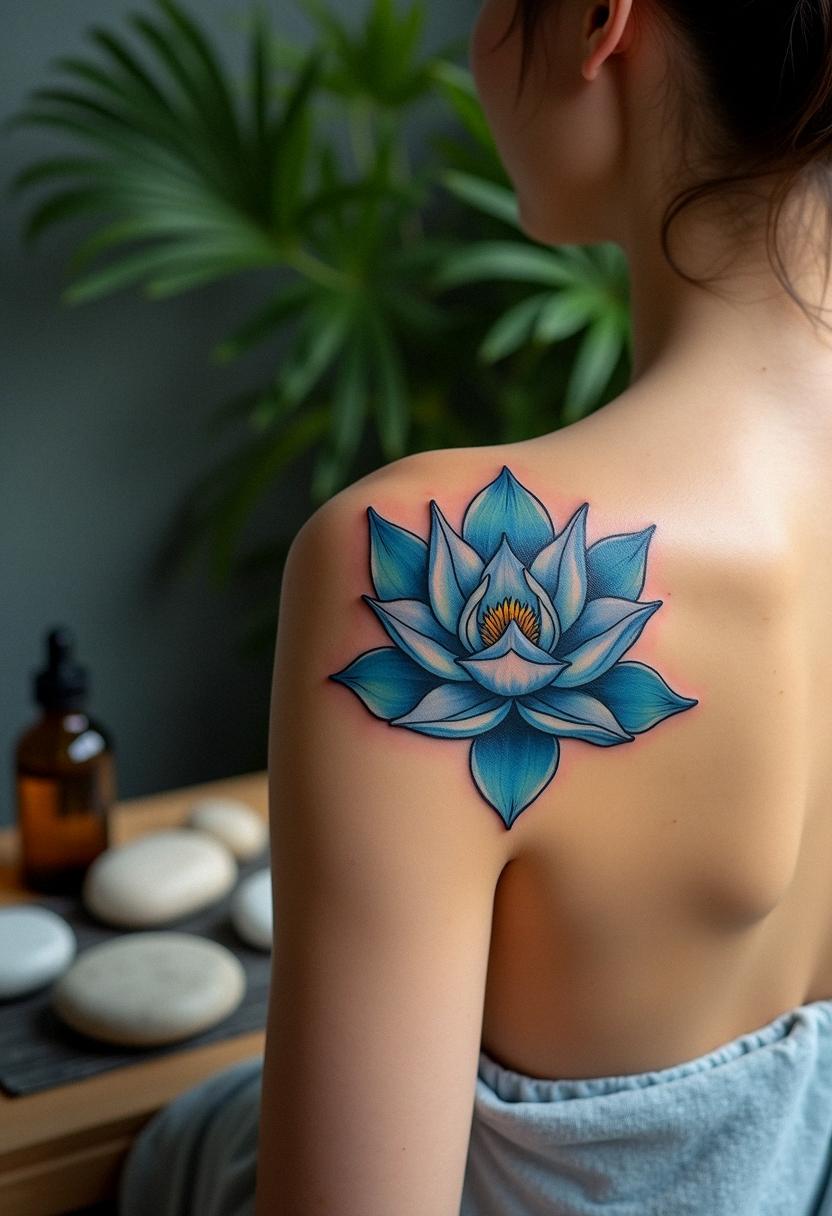

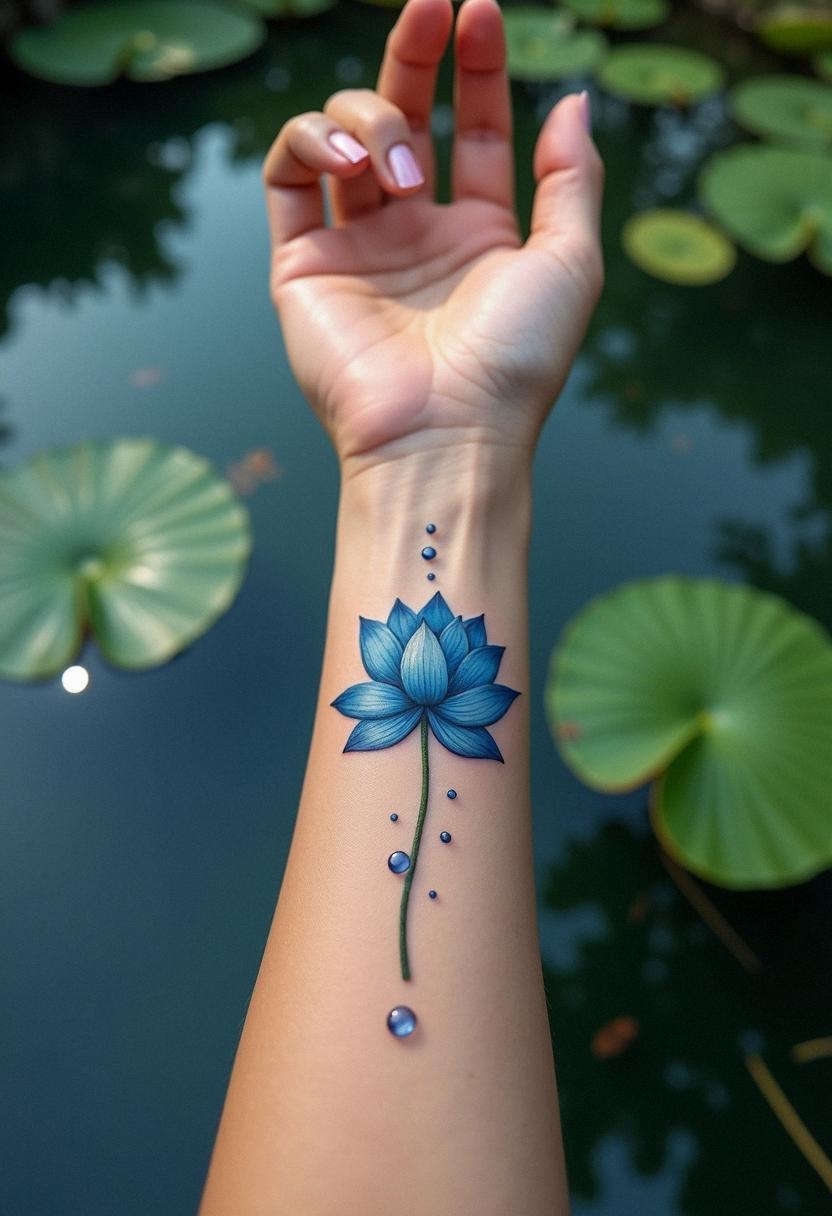
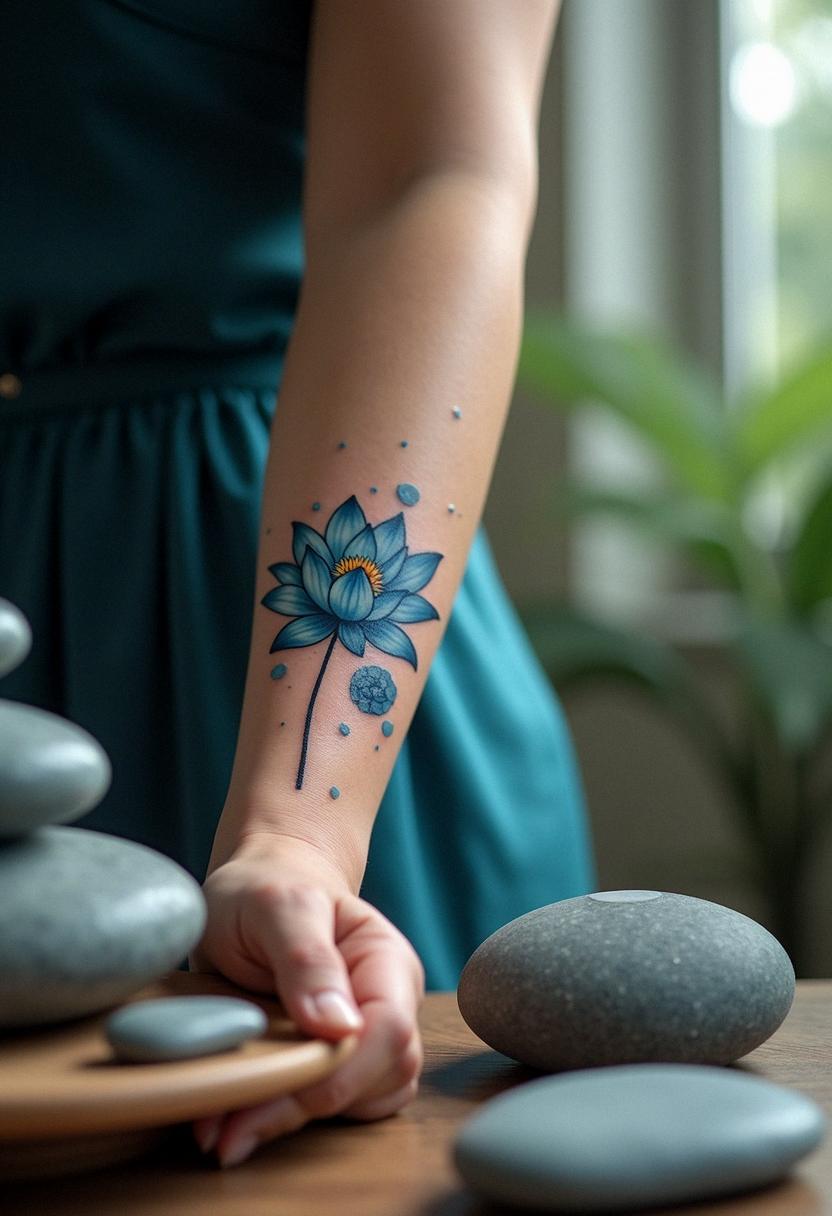
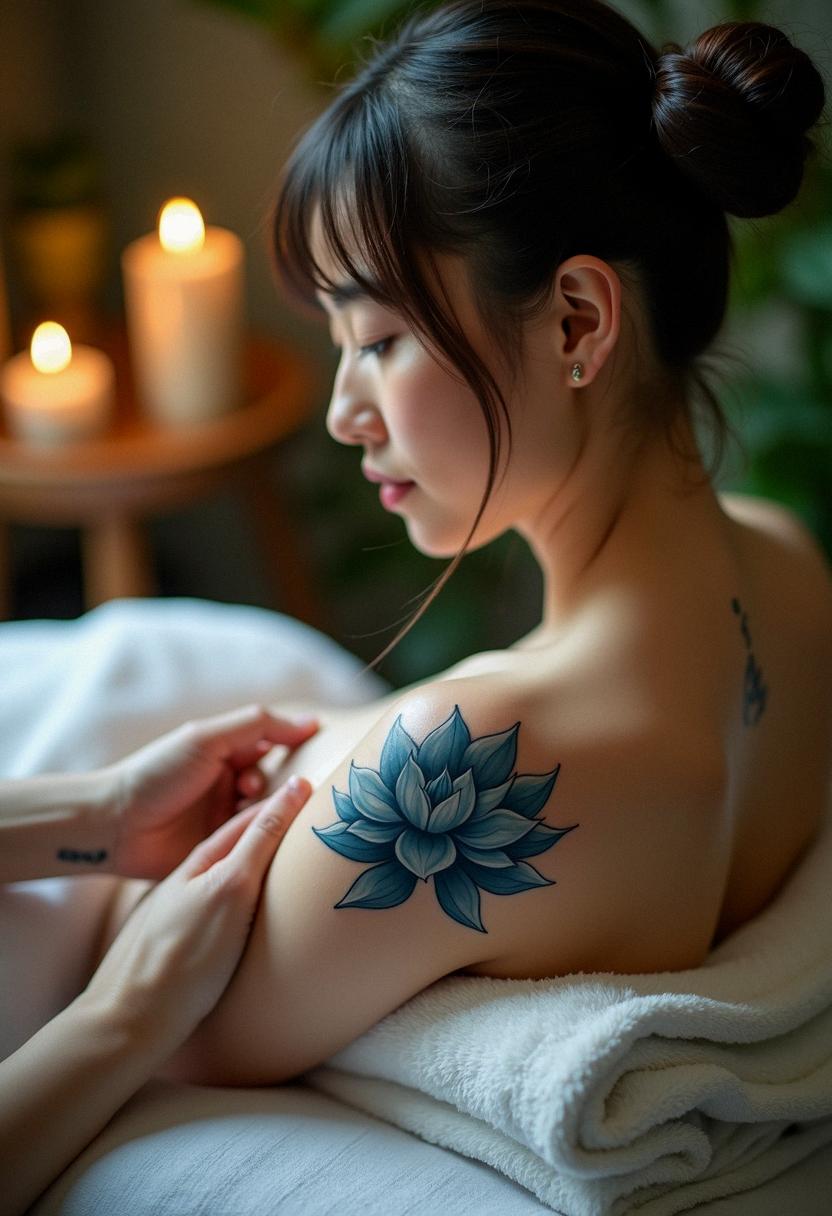
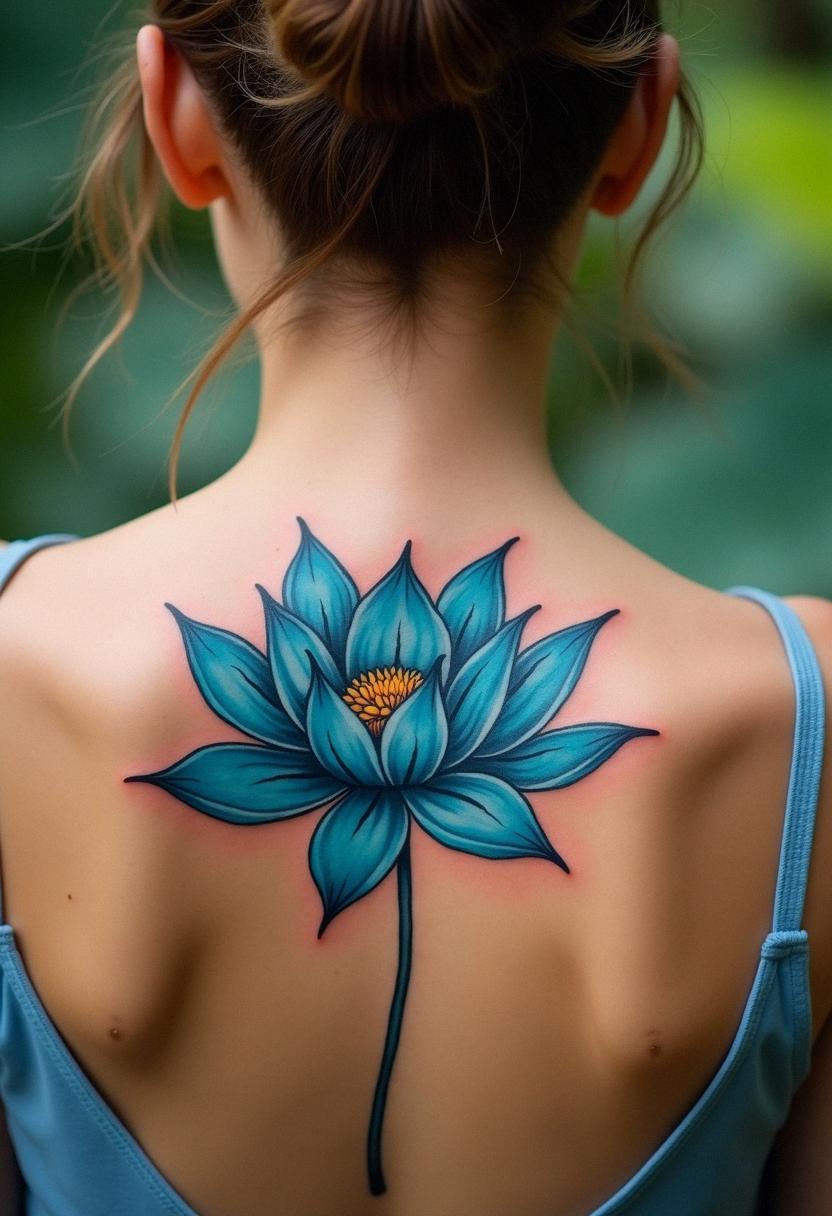
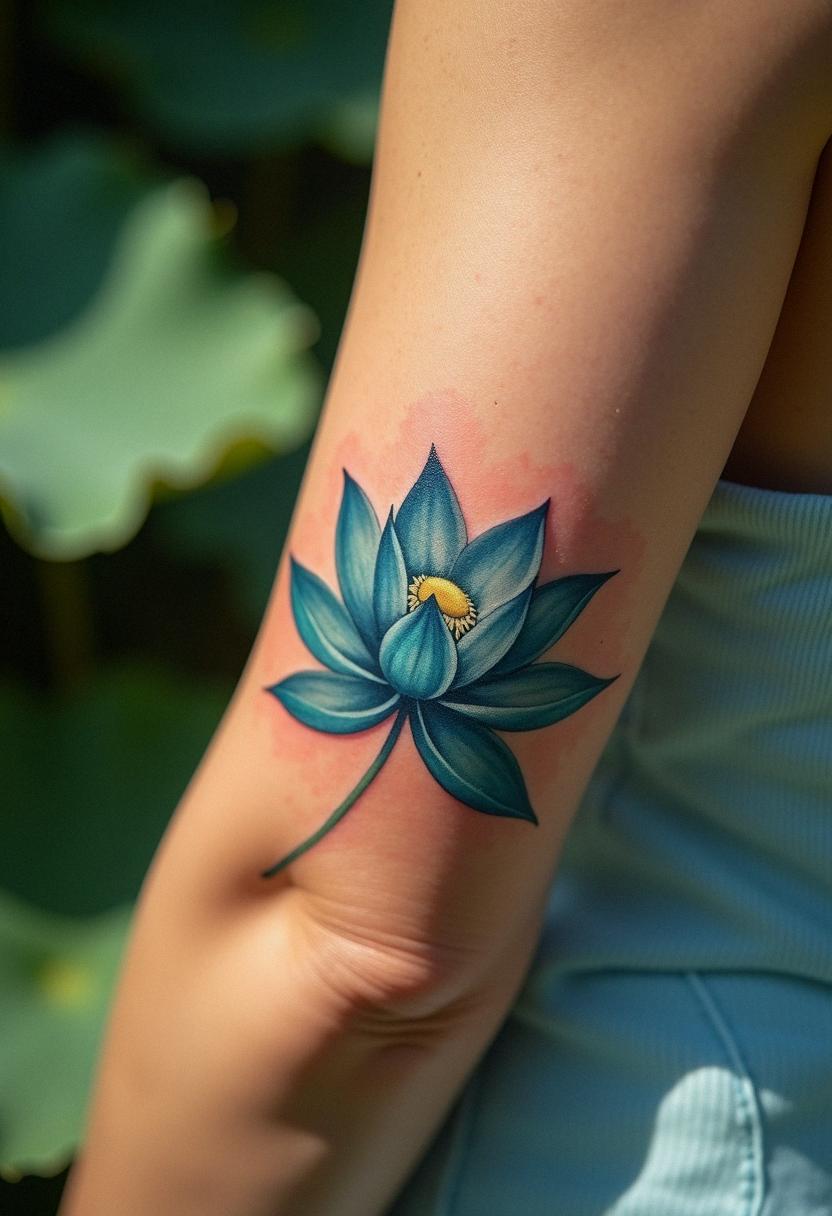

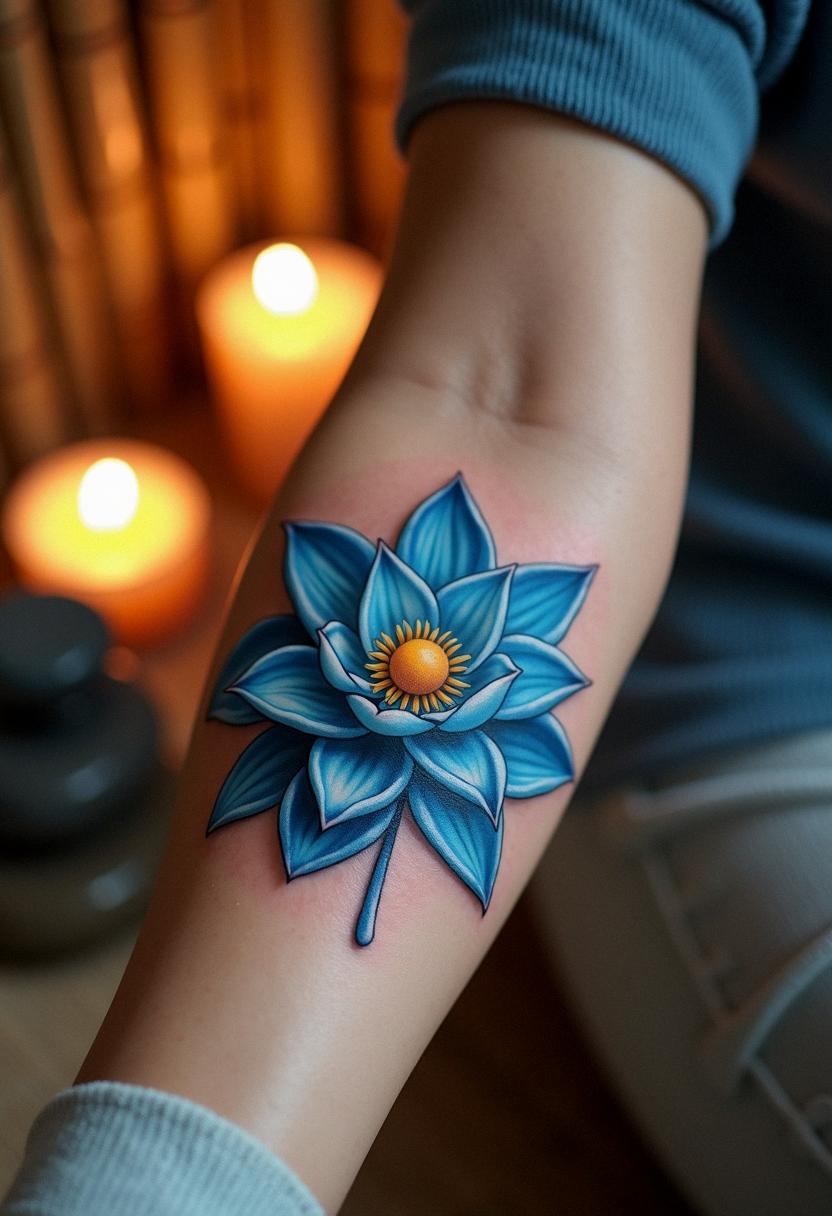
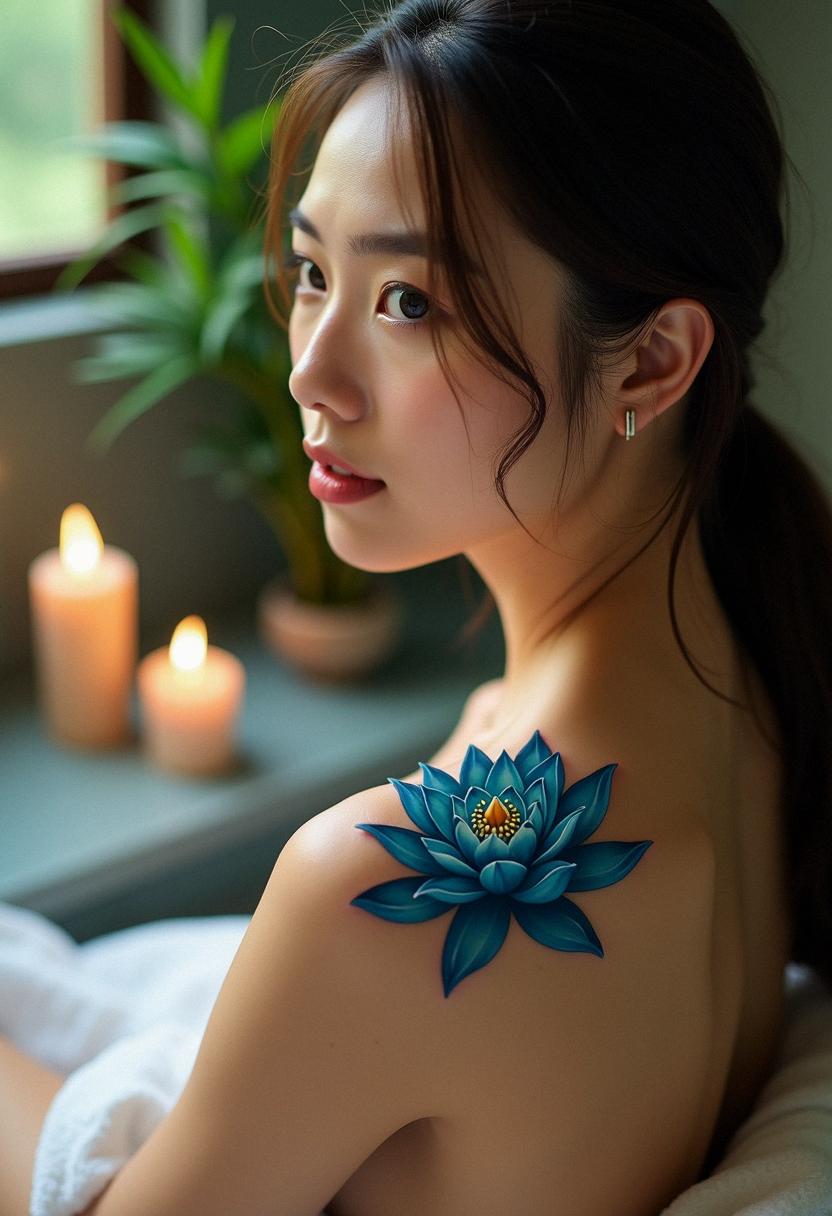
Wrap-Up: The Everlasting Appeal of the Blue Lotus Tattoo
The blue lotus tattoo encapsulates an enduring appeal that continues to charm and inspire enthusiasts around the globe. Reflecting on its rich symbolism, diverse artistic styles, and deep-rooted cultural narratives, it’s clear that this design stands as a testament to both timeless beauty and personal evolution. There’s something truly magical about carrying a piece of ancient wisdom that celebrates rebirth and inner strength, inviting you to connect with your innermost self. From the careful interplay of vibrant blue hues to the thoughtfully executed shading techniques, every aspect of the tattoo speaks to the transformative power of art. For many, the blue lotus is a daily reminder of the journeys we all undertake—a symbol of resilience and a marker of new beginnings. As you consider adding this piece to your story, remember that each detail is a reflection of both historical reverence and personal meaning. Your blue lotus tattoo is more than a decorative element; it’s an emblem of your continuous evolution, a graceful nod to the beauty that emerges when you transform trials into triumphs and setbacks into stepping stones toward a more vibrant future.
